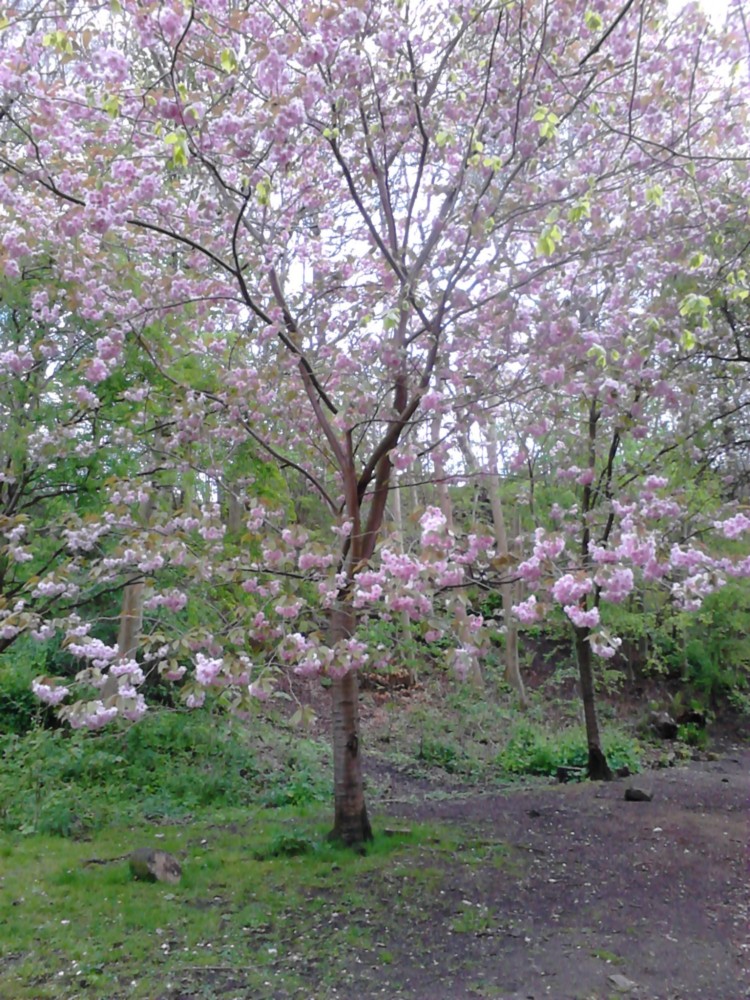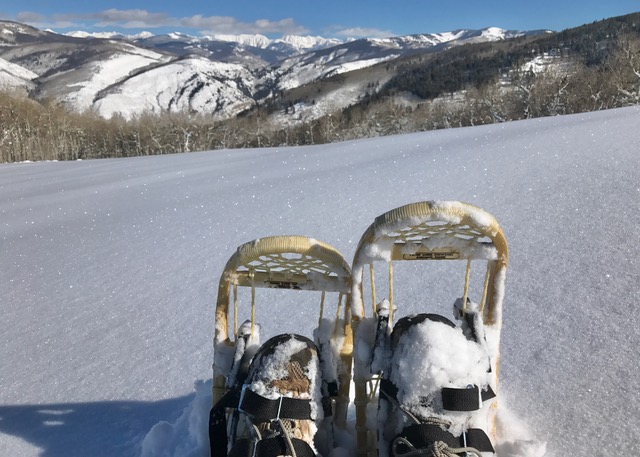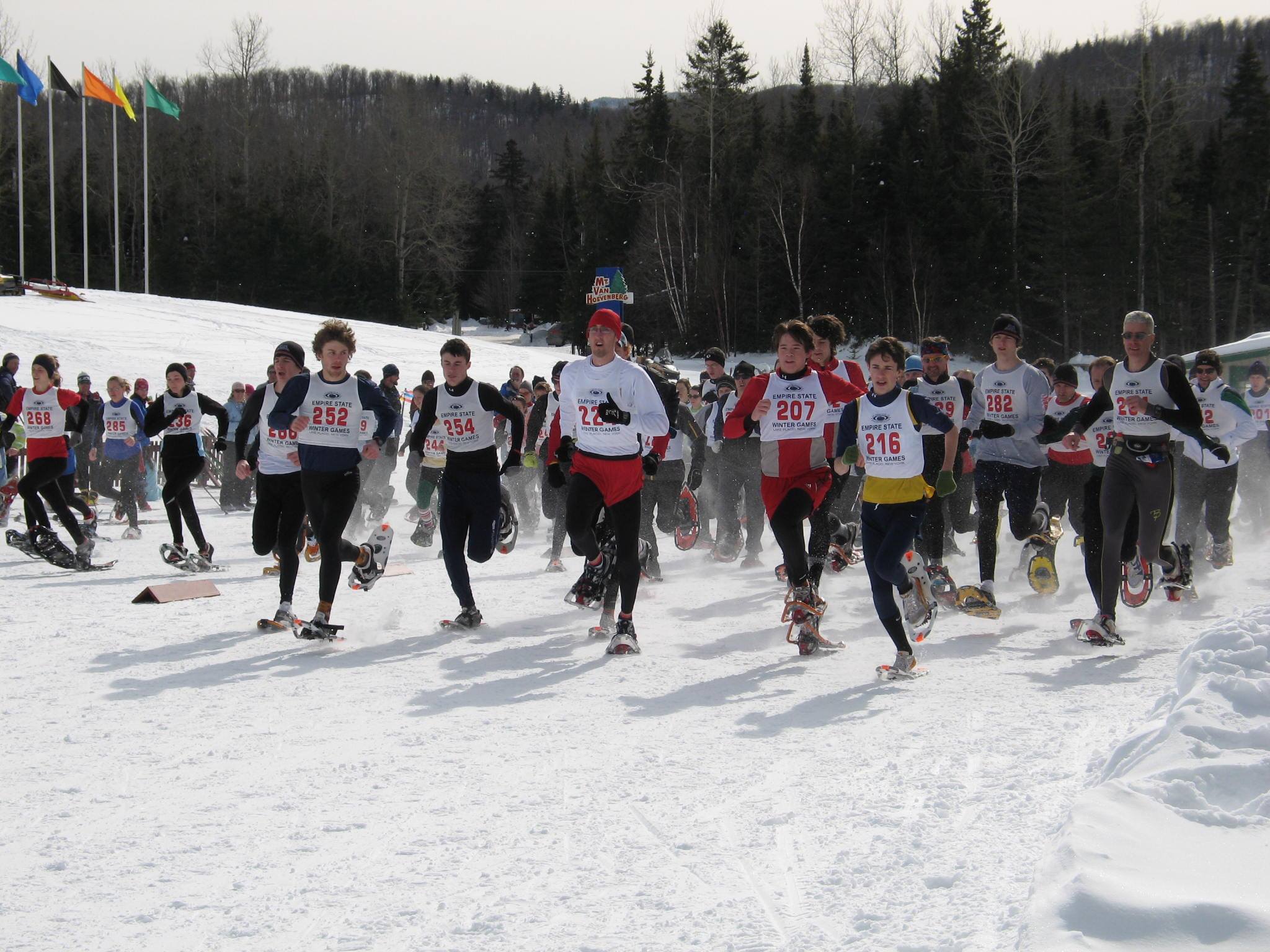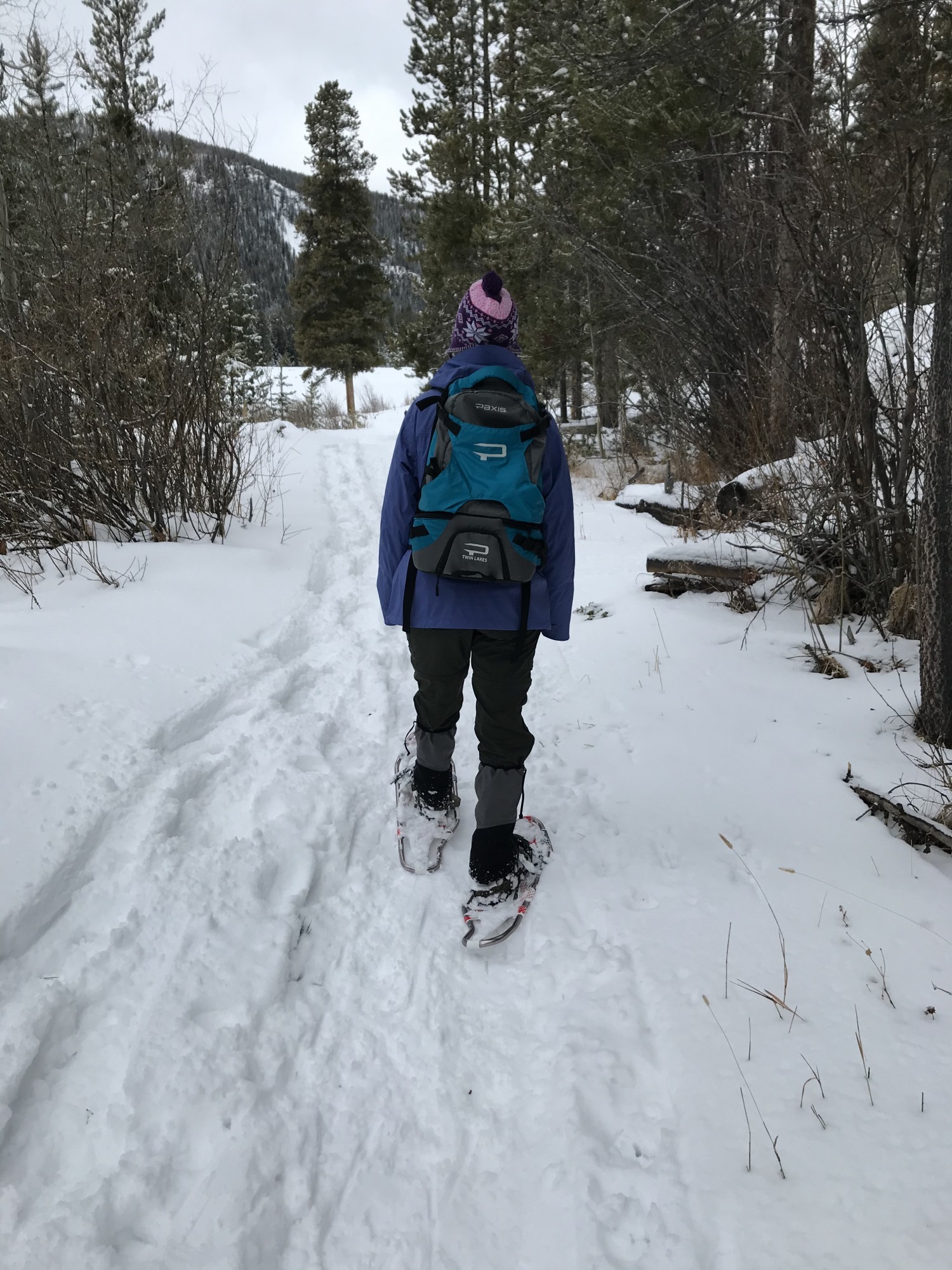‘Resistance is the creator of all great things.’ –Heraclitus
Your core region is as important to your snowshoeing as is the foundation to your home.
Previous columns have highlighted various ways to strengthen your abdomen, pelvic girdle, back muscles, and so forth. Pilates is another mode to consider if you desire to toughen your powerhouse region and truly enjoy our sport.
Pilates is a system of resistance training that engages your mind and body in a balanced mix of strength and flexibility. Pilates works the entire body with a particular effort on strengthening and stabilizing your core region. Specific exercises are choreographed to produce strength, suppleness, and alignment through smooth, continuous motion and resistance.
These are crucial elements to the snowshoer. Remember this when your hip flexion is nonexistent, your psoas muscles are burning, your lower back shoots daggers, and your abs cramp….
History
German-born Joseph H. Pilates (1880-1967) began studying anatomy and exercise at age 14 to improve his health. He suffered from rickets, asthma, and rheumatic fever as a child. He became an accomplished boxer, diver, gymnast, and skier.
Pilates implemented his knowledge during World War I to rehabilitate bedridden patients using bedsprings as a form of resistance training. He also developed floor exercises for those able to impart weight-bearing resistance.
He immigrated to New York in 1925. He and his wife Clara, a nurse, opened a gym and soon became popular with local ballet and dance schools and studios. Their approach focused on the fitness and health benefits of his specialized technique – The Pilates Method.
Principles
The explosive growth of Pilates has created numerous variations of its maxims. Regardless of each interpretation the following depicts the general fundamentals adhered by practitioners of this specialized system:
*Concentration – to synthesize the mind-body link;
*Centering – mental focus and action begins at the trunk and moves to the extremities;
*Control – proper form produces effective and safe results;
*Breathing – deep, diaphragmatic inhalations and exhalations stimulate muscles and your awareness;
*Alignment – postural awareness promotes efficiency;
*Fluidity – grace and elegance supersede repetitions;
*Integration – different muscle groups simultaneously engage to create harmony;
*Stabilizing – mobility can occur only after stillness.
Benefits
Pilates yields numerous benefits for the snowshoer no matter your age or fitness level. Faithful practice of this low-impact system will enhance your snowshoeing and improve your general wellness. Its deviation from the “no pain, no gain,” high-impact, push until exhaustion workouts has garnered worldwide appeal.
“Pilates has proven itself in the world of fitness,” according to Pilates Instructor Lynda O’Brien. “It is not a fad, it is pervasive, and it is increasingly being implemented in various realms from corporations, wellness clinics, rehab centers, schools, professional sports, and even at the mall,” O’Brien said.
A strong core region will enhance areas of your life beyond snowshoeing – whether it is housework, gardening, shoveling snow, feeding Sparky, or carrying groceries. Pilates emphasizes balance and control and teaches the maxim touted by Wholistic Fitness Creator, Steve Ilg, that “less is more.”
Your commitment to Pilates will reap some of the following benefits:
*Increase balance, strength, and flexibility;
*Stronger, more flexible spine;
*Restore postural alignment;
*Develop long, lean tissue;
*Improve circulation;
*Increase range of motion;
*Mitigate back pain and joint stress;
*Heighten neuromuscular coordination;
*Enhance mobility and stamina;
*Increase bone density;
*Facilitate recovery from strain or injury;
*Reduce stress;
*Engage mind-body awareness;
*Improve your self-esteem;
*Increase lung capacity;
*Facilitate muscle economy and efficiency;
*And much more
Getting Started
It is easy to begin your journey with Pilates. A mat-based initiation is usually recommended although creating time to visit a certified instructor at some point is highly recommended. This will help correct any flaws in your technique and answer your questions.
In addition to “Pilates For Dummies,” there are seemingly countless videos, CDs, and DVD programs aimed at the beginner. It is recommended that you view the programs several times prior to attempting the poses.
Participating in a class or private session at a studio is the ultimate education and introduction to the specialized equipment available to accelerate your progress.
Pilates instructors are not cheap. Instructors must learn more than 500 exercises in addition to the theory and philosophy behind each movement and sequence. There is an apprentice period to master proper form and enhance their teaching skills prior to a rigorous written and practical exam. The specialized training and the overhead of furnishing an equipped studio will command rates from $40 to $100 or more per hour.
Check with the governing body – Pilates Method Alliance (http://www.pilatesmethodalliance.org) – to locate an instructor or studio near you.
Equipment
Pilates can be performed effectively on a mat but the specialized equipment is designed to accelerate your training through a whole new level of intensity and resistance. Learn how to use the equipment through a qualified instructor – whether you plan to use them at a studio or at your home.
There are five major pieces of equipment designed to accomplish your fitness goals. Each offers its unique exercises and specializes in total body wellness. Most of the equipment offers an eerie visual of medieval torture relics but its purpose is distinct.
Find a brief review of the equipment and a list of props below.
*The Reformer – Perhaps the most renowned apparatus with sophisticated pulleys, springs, and straps to perform more than 100 exercises. It helps one to develop postural alignment and torso stability while stressing your limbs via progressive resistance.
*The Cadillac – It is also known as the Trapeze Table. It is one of the most versatile and effective pieces of equipment invented. It bridges the gap between fitness and physical therapy. More than 80 different exercises to challenge your abdominal muscles, strengthen your back muscles, and develop your spinal flexibility can be performed on this apparatus.
*The Chair – Other names include the Wunda Chair or the Stability Chair. Adjustable spring resistance is again the key component of this piece of equipment. It is used to regenerate tissue in over-use, strain, and injury situations. Toning and maintenance are also highlighted.
*The Barrel – Also referred to as the Spine Corrector, Step or Hump Barrel. Its shape resembles a whistle and is effective in stretching the spine, lower back, and shoulders in a safe, stabilized, and supportive manner. This apparatus is becoming more prevalent in mat-based sessions in which circuit training is emphasized. There are several barrel versions for specific purposes.
*Resistance Bands – Commonly referred to Thera-Band or Flex-Band. It imparts light resistance and is particularly useful in a rehabilitative scenario. It is also implemented for stretching, toning, and sculpting with incredible versatility to complement mat exercises.
There are numerous props such as balls, spinal supports, foam rollers, and much more to promote variety and isolate specific clientele needs.
Summary
Pilates is a brisk set of choreographed exercises that will make you strong and supple. Although it may incorporate the breath and postural elements of yoga – it’s not spiritual in nature.
It will provide core strength and flexibility. It can also be used to treat injuries, malformations, scoliosis, and related spinal issues. Snowshoers with osteoporosis can use it to attain requisite weight-bearing exercises.
Pilates can be used to test a snowshoer’s fitness level.
Pilates is an ever-growing form of fitness and therapy infiltrating all aspects of daily life. It may just become your preferred mode to enhance your snowshoeing and improve your wellness.
______________
Sources:
*’The Outdoor Athlete,’ by Steve Ilg;
*’The Winter Athlete,’ by Steve Ilg;
*Pilates Method Alliance;
*All About Pilates;
*’Pilates for Dummies,’ by Michelle Dozois;
*’Pilates Basics,’ by Hilary Burnett;
*PilatesInsight.com;
*Lynda O’Brien, Certified Pilates Instructor – Pilates Method Alliance;
*Health Magazine;
*Nexus – Colorado’s Holistic and Spiritual Journal;
*Alternative Medicine Magazine





